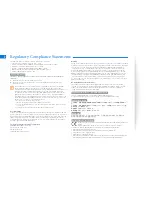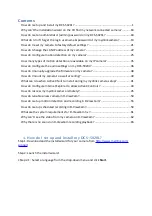
CAMERAS FRAME GRABBERS IMAGING SOLUTIONS
BOBCAT Hardware User’s Manual
IMPERX
Rev. 2.0.9
6421 Congress Ave.
4/8/2014
Boca Raton, FL 33487
www.imperx.com
+1 (561) 989-0006
26 of 329
1.2 BOBCAT SPECIFICATIONS
1.3.1 General Information
A CCD camera is an electronic device for converting light into an electrical signal.
The camera contains a light sensitive element CCD (Charge Coupled Device) where
an electronic representation of the image is formed. The CCD consists of a two
dimensional array of sensitive elements – silicon photodiodes, also known as pixels.
The photons falling on the CCD surface create photoelectrons within the pixels, where
the number of photoelectrons is linearly proportional to the light level. Although the
number of electrons collected in each pixel is linearly proportional to the light level
and exposure time, the amount of electrons varies with the wavelength of the incident
light. When the desired exposure is reached, the charges from each pixel are shifted
onto a vertical register, VCCD, and then one row downwards in a vertical direction
towards a horizontal register, HCCD. After that the electrons contained in the HCCD
are shifted in a horizontal direction, one pixel at a time, onto a floating diffusion
output node where the transformation from charge to voltage takes place. The resultant
voltage signal is buffered by a video amplifier and sent to the corresponding video
output. There are two floating diffusions and two video amplifiers at each end of the
HCCD, and the charges can be transferred towards any of the outputs (depending on
the mode of operation). The time interval required for all the pixels, from the entire
imager, to be clocked out of the HCCD is called a frame. To generate a color image a
set of color filters (Red, Green, and Blue) arranged in a “Bayer” pattern, are placed
over the pixels. The starting color is typically Green for TRUESENSE CCDs and Red
for SONY CCDs, but it varies from CCD to CCD. Figure 1.0a shows the CCD pixel
structure. Table 1.1 shows the individual pixel structure for different BOBCAT
cameras. Effective pixels image consists of Active and Buffer pixels. Figures 1.1a, b, c
and 1.2a, b show the camera’s spectral response. Figure 1.3 shows the Bayer pattern
arrangement.
A new innovation to the Bayer pattern is the TRUESENSE color filter pattern from.
The TRUESENSE Color Filter pattern uses a technology which provides a 2x
improvement in light sensitivity as compared to a standard color Bayer pattern. This
technology utilizes panchromatic filters (filters that are sensitive to all colors of light)
in addition to the standard green, red, blue filters. Figure 1.1d shows the typical
spectral response of the TRUESENSE CCD. Figure 1.3a shows the TRUESENSE
pattern arrangement. Figure 1.0b shows CCD pixel structure.














































